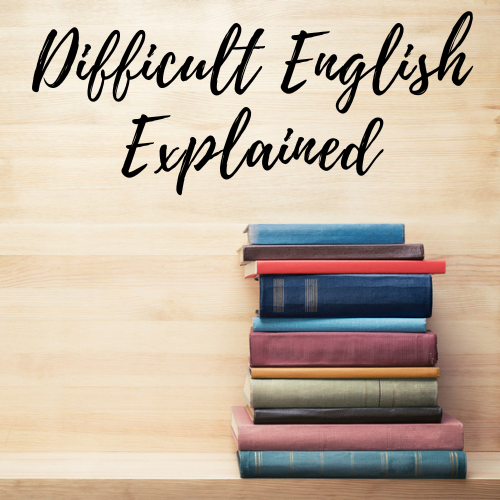
Today I want to talk about a particular group of English adjectives. These adjectives end with the suffix “-y”, which is pronounced like /i/. The “-y” suffix can change nouns and verbs into adjectives. For example, if we take the noun “dirt” and add “–y” to the end, we get the adjective “dirty.” If we take the verb “leak” and add “–y,” we get the adjective “leaky.”
The earliest known examples of this suffix date from Old English, or English before the 12th century A.D. This suffix is still in active use. It is considered “productive” — that means people are still using it to make new adjectives.
There are two little quirks to remember about this suffix. Firstly, if a noun ends in “-er”, the “e” will be lost. For example, “anger” becomes “angry,” and “hunger” becomes “hungry.” Secondly, it’s not added to words that end in /aɪ/ or /i/ sounds. We can add “-y” to “leg” to make “leggy,” but we can’t add “-y” to “thigh” or “knee.” You can’t have two/i/ sounds without something between them. There is no way to hear that there are two of them. The /ɪ/ sound at the end of /aɪ/ is very close to the /i/ sound, so it has the same effect.
What does the “-y” suffix mean?
The most common meaning of the “-y” suffix is “characterized by.” If you say that a person is “hairy,” it means that they have a lot of hair. Their hair is one of the first things you notice. You can say the same thing about a foggy day. The most obvious characteristic of the day is the fog. Here are some examples where we change nouns into adjectives:
- mud / muddy: His boots were muddy. (They were covered with mud.)
- ice / icy: People skated on an icy pond. (The pond was covered with ice.)
Another meaning of the “-y” suffix is “looks like (something), feels like (something), behaves like (something).” If a person is timid and tends to go unnoticed, we say the person is “mousey.” Others don’t notice the person, just as mice are rarely noticed. If a person looks “sleepy,” they look like they need sleep. Here are some examples where we change nouns into adjectives:
- wax / waxy: The shoe polish left a waxy residue. (The residue looked like wax.)
- winter / wintry: Even though it was April, we still had wintry temperatures. (We had temperatures that felt like winter temperatures.)
Here are some examples where we change verbs into adjectives:
- leak / leaky: We called a plumber to repair a leaky pipe. (The pipe leaked.)
- chat / chatty: The book is presented in a chatty and easy-to-read style, but it carries some powerful messages. (The language of the book is like an informal conversation.)
To summarize, the “-y” suffix”, which is pronounced like /i/, can change nouns and verbs into adjectives. There are many adjectives in the dictionary that end in “-y,” and more are being created all the time.
References
Dixon, R. M. W. (2014) Making New Words: Morphological Derivation in English, Oxford, United Kingdom: Oxford University Press, pp. 238-239.
The Britannica Dictionary, https://www.britannica.com/dictionary/-ish, Accessed May 21, 2024
The Britannica Dictionary, https://www.britannica.com/dictionary/-y, Accessed May 21, 2024
The Free Dictionary by Farlex, https://www.thefreedictionary.com/-y, Accessed May 21, 2024
Online Etymology Dictionary, https://www.etymonline.com/word/-y#etymonline_v_25631, Accessed May 9, 2024
Would you like to support my content? Make a donation at Buy me a Coffee!
Get notified of new blog posts on my Telegram channel. Sign up at https://t.me/diffengexplnd.
